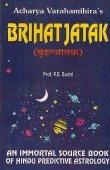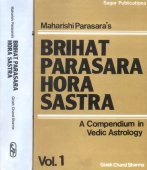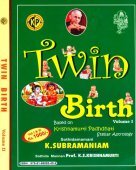Mole: 3 definitions
Introduction:
Mole means something in biology. If you want to know the exact meaning, history, etymology or English translation of this term then check out the descriptions on this page. Add your comment or reference to a book if you want to contribute to this summary article.
Biology (plants and animals)
Source: Wisdom Library: Local Names of Plants and DrugsMole in the Hindi language is the name of a plant identified with Pyrus pashia Buch.-Ham. ex D. Don from the Rosaceae (Rose) family having the following synonyms: Pyrus kumaoni, Pyrus nepalensis. For the possible medicinal usage of mole, you can check this page for potential sources and references, although be aware that any some or none of the side-effects may not be mentioned here, wether they be harmful or beneficial to health.
Source: Google Books: CRC World Dictionary (Regional names)Mole in India is the name of a plant defined with Saccharum bengalense in various botanical sources. This page contains potential references in Ayurveda, modern medicine, and other folk traditions or local practices It has the synonym Imperata sara (Roxb.) Schult. (among others).
Example references for further research on medicinal uses or toxicity (see latin names for full list):
· Contributions from the United States National Herbarium (2003)
· Mantissa (1824)
· Journal of Cytology and Genetics (1990)
· Illustrations of the Botany … of the Himalayan Mountains … (1839)
· Lloydia (1958)
· Öfversigt af Förhandlingar: Kongl. Svenska Vetenskaps-Akademien (1855)
If you are looking for specific details regarding Mole, for example side effects, chemical composition, pregnancy safety, diet and recipes, health benefits, extract dosage, have a look at these references.

This sections includes definitions from the five kingdoms of living things: Animals, Plants, Fungi, Protists and Monera. It will include both the official binomial nomenclature (scientific names usually in Latin) as well as regional spellings and variants.
Languages of India and abroad
Kannada-English dictionary
Source: Alar: Kannada-English corpusMole (ಮೊಲೆ):—
1) [noun] either of two milk-secreting glands protruding from the upper, front part of a woman’s body; the breast.
2) [noun] a corresponding gland in a female primate; the breast; ಮೊಲೆ ಬಿಡಿಸು [mole bidisu] mole biḍisu to cause (a child) to give up suckling, and cause to become accustomed gradually to food other than mother’s milk; to wean.
--- OR ---
Mole (ಮೊಲೆ):—[noun] the plant Pandanus fascicularis ( = P. odoratissimus, = P. tectorius) of Pandanaceae family (?).
--- OR ---
Moḷe (ಮೊಳೆ):—
1) [verb] to begin to grow; shoot forth, as a plant from a seed; to sprout.
2) [verb] to come forth into view; become visible; to emerge.
--- OR ---
Moḷe (ಮೊಳೆ):—
1) [noun] a new growth from a germinating seed or from a rootstock, tuber or the like; a sprout.
2) [noun] an abnormally enlarged vein mainly due to a persistent increase in venous pressure, occurring outside the anal sphincter and beneath the surface of the anal skin; hemorrhoid; piles.
3) [noun] the tip of a blister or pimple.
4) [noun] a slender, rigid piece of metal, having one end pointed and the other flattened, driven by hammering into or through wood, other building materials, etc., as used in building, in fastening or in holding separate pieces together; a nail.
5) [noun] a pin fixed to the axle, to prevent the wheel from coming off; a linch pin.
6) [noun] a sharp, pointed tool to engrave letters, characters, on a metal coin.
7) [noun] a rectangular piece or block of metal, having on its upper surface a letter or character in reverse, used to make an impression on paper, as in printing press or on a typewriter; a type.
--- OR ---
Mōḷe (ಮೋಳೆ):—
1) [noun] a narrow opening caused by a crack or split; fissure; cleft; chink.
2) [noun] a subterranean water-course.
--- OR ---
Mōḷe (ಮೋಳೆ):—
1) [noun] a wide extent of level country; a plain land.
2) [noun] a field where salt is made from sea-water.
3) [noun] a heap of salt.
Kannada is a Dravidian language (as opposed to the Indo-European language family) mainly spoken in the southwestern region of India.
See also (Relevant definitions)
Starts with (+36): Mole plant, Molebar, Molebaru, Molebavu, Moledorisu, Moledoru, Moledottu, Moledudi, Molegada, Moleganisu, Molegatti, Molegattu, Molegodu, Molegolisu, Molegollu, Molegottu, Molegudi, Molegudu, Molegusu, Molehalu.
Ends with (+4): Accarimole, Accumole, Amole, Aralmole, Aroeira mole, Clemole, Edemole, Ermole, Erumole, Gubbimole, Horamole, Immole, Karimole, Kedagemole, Kokkemole, Kudumole, Olamole, Palmito mole, Palmole, Tagalumole.
Full-text (+150): Tila, Piplu, Tilakalaka, Jatumani, Tilaka, Nyaccha, Mushikotkara, Bhushravas, Kina, Valmika, Mandari, Jayaghna, Shrivatsa, Akhu, Akhukarisha, Lamsa, Vamalura, Dehalakshana, Kanika, Naku.
Relevant text
Search found 44 books and stories containing Mole, Moḷe, Mōḷe; (plurals include: Moles, Moḷes, Mōḷes). You can also click to the full overview containing English textual excerpts. Below are direct links for the most relevant articles:
Kathasaritsagara (the Ocean of Story) (by Somadeva)
The significance of moles on the human body < [Notes]
Chapter V < [Book I - Kathāpīṭha]
Chapter XLIX < [Book VIII - Sūryaprabha]
Gobhila-grihya-sutra (by Hermann Oldenberg)
Satapatha-brahmana (by Julius Eggeling)
Kāṇḍa II, adhyāya 1, brāhmaṇa 1 < [Second Kāṇḍa]
Kāṇḍa II, adhyāya 6, brāhmaṇa 2 < [Second Kāṇḍa]
Kāṇḍa IV, adhyāya 5, brāhmaṇa 2 < [Fourth Kāṇḍa]
Folk Tales of Gujarat (and Jhaverchand Meghani) (by Vandana P. Soni)
Chapter 11 - Nag Panchmi [Pancham] < [Part 3 - Kankavati]
Tiruvaymoli (Thiruvaimozhi): English translation (by S. Satyamurthi Ayyangar)
Pasuram 5.5.2 < [Section 5 - Fifth Tiruvaymoli (Ennaneyo, annaimirkal)]
Pasuram 5.2.8 < [Section 2 - Second Tiruvaymoli (Polika Polika)]
Mahabharata (English) (by Kisari Mohan Ganguli)
Related products


